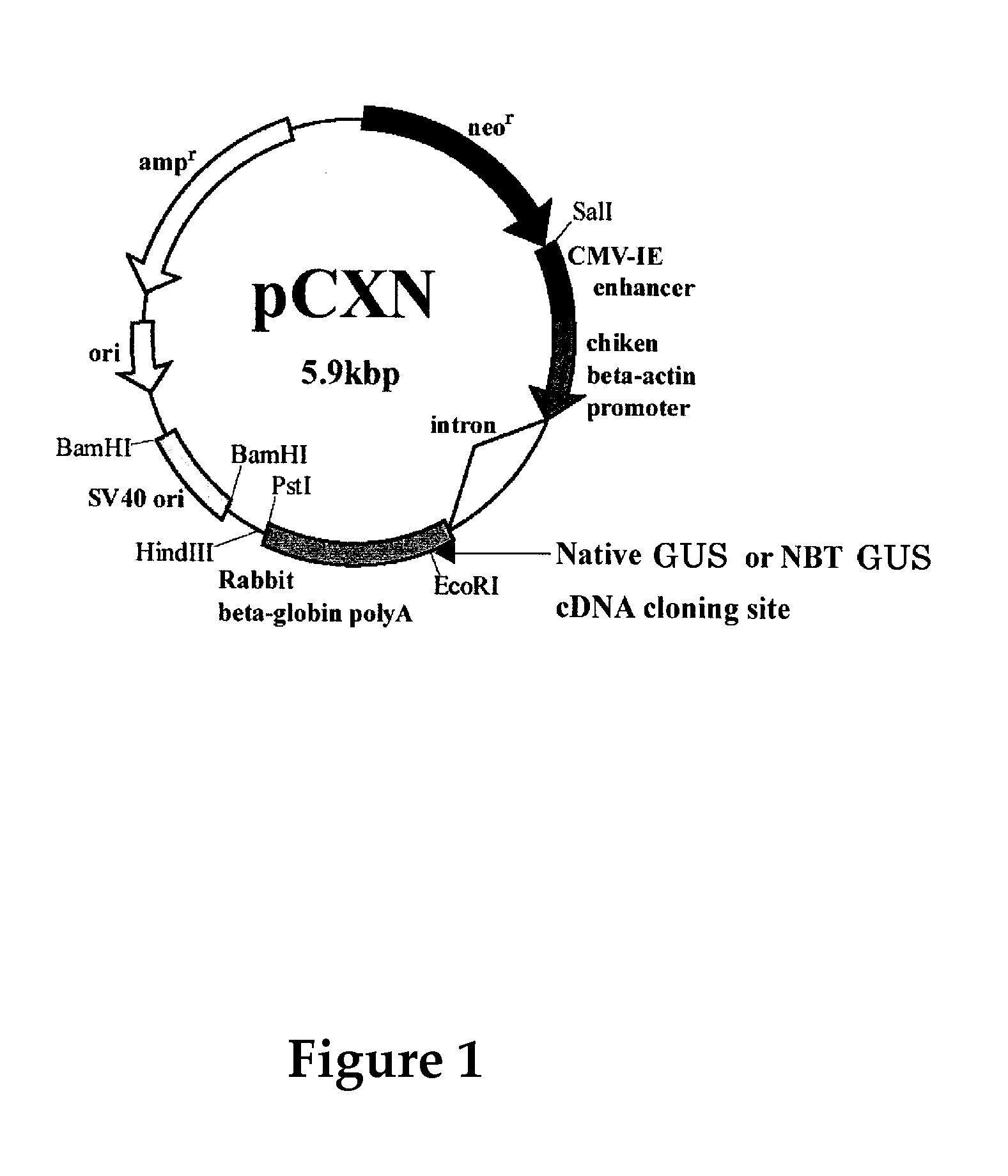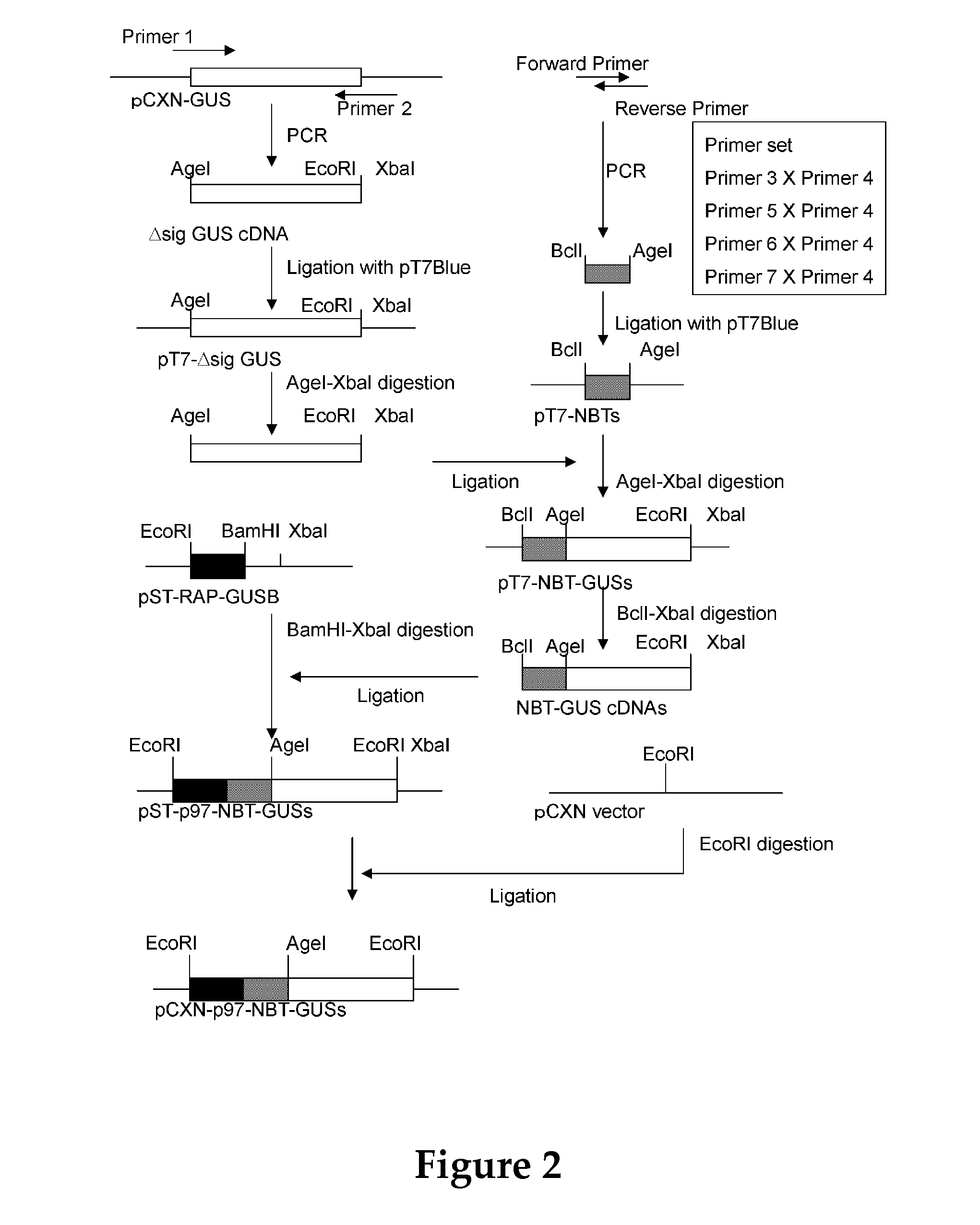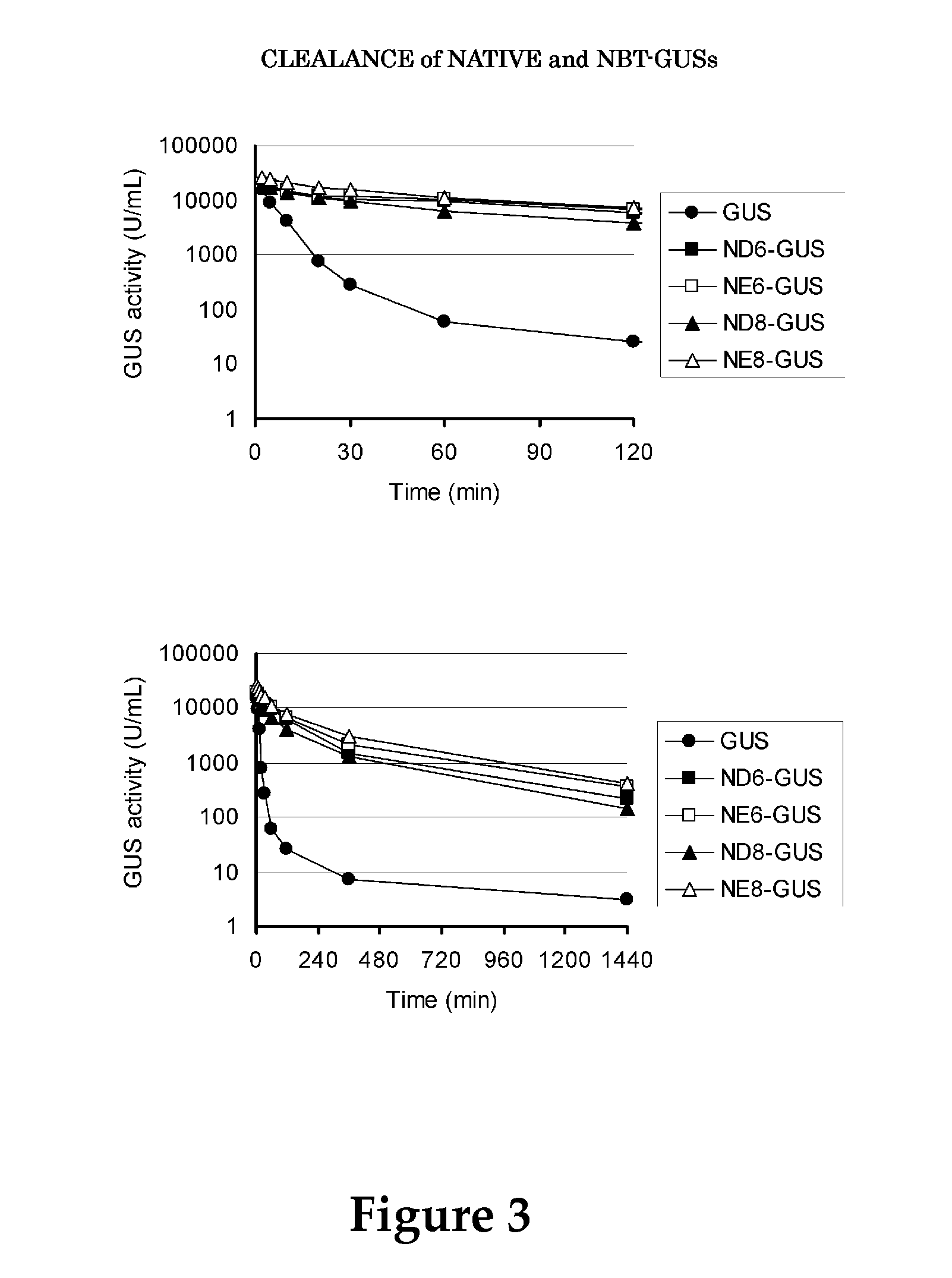Enhancing the effect of therapeutic proteins on the central nervous system
a technology of therapeutic proteins and central nervous system, which is applied in the direction of peptide/protein ingredients, enzyme stabilisation, metabolism disorders, etc., can solve the problems of inability to effectively remedy the disease, unstable pharmaceutical preparations and relatively rapid inactivation, so as to increase the therapeutic effect of physiologically active proteins on the central nervous system, increase the targeting and deposition of physiologically active enzymes, and increase the stability of physiologically active proteins
- Summary
- Abstract
- Description
- Claims
- Application Information
AI Technical Summary
Benefits of technology
Problems solved by technology
Method used
Image
Examples
example 1
Method for Construction of Expression Vectors
[0041] Vector pCXN had been constructed in accordance with a literature (7) and was offered to us by Prof. Miyazaki at Osaka University. An expression vector for native human GUS, pCXN-GUS, was constructed by using human GUS cDNA that had been reported by Oshima et al. (8)(Accession No. of GenBank for the Amino acid and cDNA sequence of Human GUS is BC014142.). An expression vector for human GUS to the N-terminus of which is attached (via a linker peptide) a short peptide (N-terminal bone tag: NBT) consisting of acidic amino acids (NBT-GUS), was constructed starting with pCXN-GUS in the following manner. FIGS. 1 and 2 schematically illustrate the process for construction.
[0042] Using pCXN-GUS as a template, PCR was carried out using LA-Taq (Takara) to amplify Δsig GUS cDNA (the sequence, nt 67-1956, left behind after removal of the sequence of nt 1-66 corresponding to a secretion signal, from the ORF region of the sequence set forth as ...
PUM
| Property | Measurement | Unit |
|---|---|---|
| concentration | aaaaa | aaaaa |
| pH | aaaaa | aaaaa |
| pH | aaaaa | aaaaa |
Abstract
Description
Claims
Application Information
 Login to View More
Login to View More - R&D
- Intellectual Property
- Life Sciences
- Materials
- Tech Scout
- Unparalleled Data Quality
- Higher Quality Content
- 60% Fewer Hallucinations
Browse by: Latest US Patents, China's latest patents, Technical Efficacy Thesaurus, Application Domain, Technology Topic, Popular Technical Reports.
© 2025 PatSnap. All rights reserved.Legal|Privacy policy|Modern Slavery Act Transparency Statement|Sitemap|About US| Contact US: help@patsnap.com



